Mohammad Bavarian
Efficient Training of Language Models to Fill in the Middle
Jul 28, 2022



Abstract:We show that autoregressive language models can learn to infill text after we apply a straightforward transformation to the dataset, which simply moves a span of text from the middle of a document to its end. While this data augmentation has garnered much interest in recent years, we provide extensive evidence that training models with a large fraction of data transformed in this way does not harm the original left-to-right generative capability, as measured by perplexity and sampling evaluations across a wide range of scales. Given the usefulness, simplicity, and efficiency of training models to fill-in-the-middle (FIM), we suggest that future autoregressive language models be trained with FIM by default. To this end, we run a series of ablations on key hyperparameters, such as the data transformation frequency, the structure of the transformation, and the method of selecting the infill span. We use these ablations to prescribe strong default settings and best practices to train FIM models. We have released our best infilling model trained with best practices in our API, and release our infilling benchmarks to aid future research.
Training Verifiers to Solve Math Word Problems
Nov 18, 2021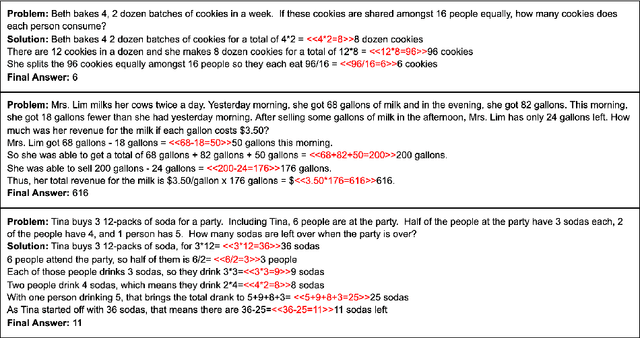
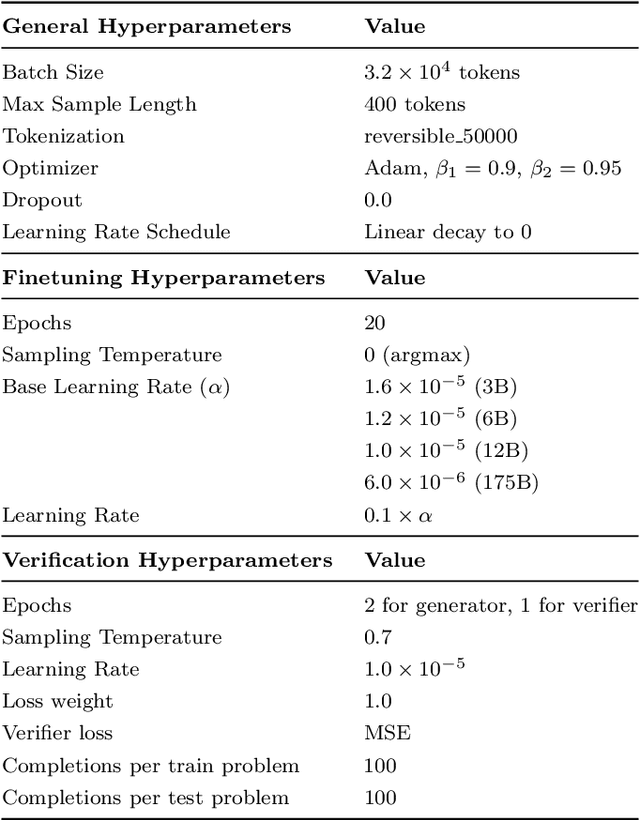
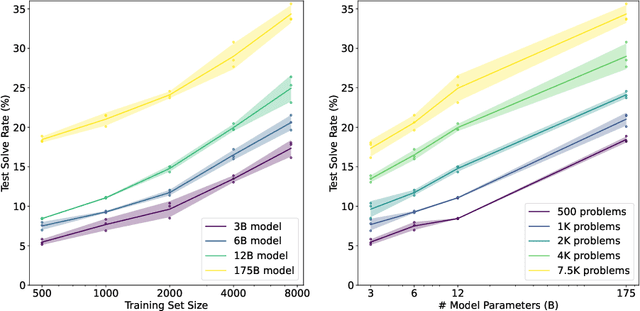
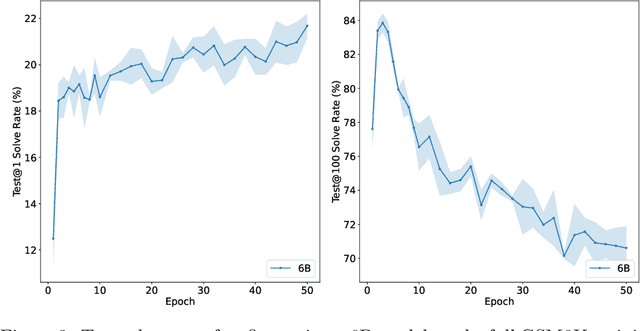
Abstract:State-of-the-art language models can match human performance on many tasks, but they still struggle to robustly perform multi-step mathematical reasoning. To diagnose the failures of current models and support research, we introduce GSM8K, a dataset of 8.5K high quality linguistically diverse grade school math word problems. We find that even the largest transformer models fail to achieve high test performance, despite the conceptual simplicity of this problem distribution. To increase performance, we propose training verifiers to judge the correctness of model completions. At test time, we generate many candidate solutions and select the one ranked highest by the verifier. We demonstrate that verification significantly improves performance on GSM8K, and we provide strong empirical evidence that verification scales more effectively with increased data than a finetuning baseline.
Evaluating Large Language Models Trained on Code
Jul 14, 2021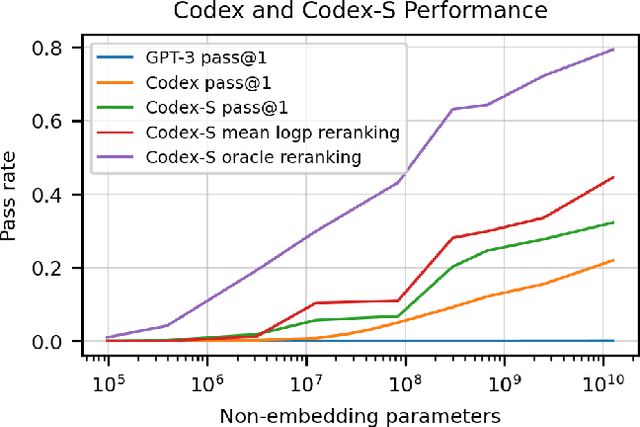
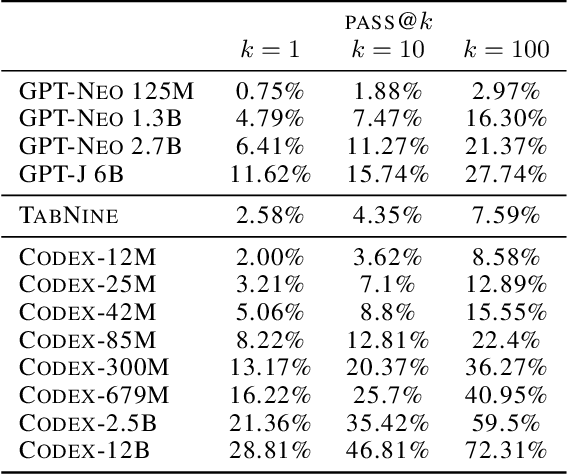
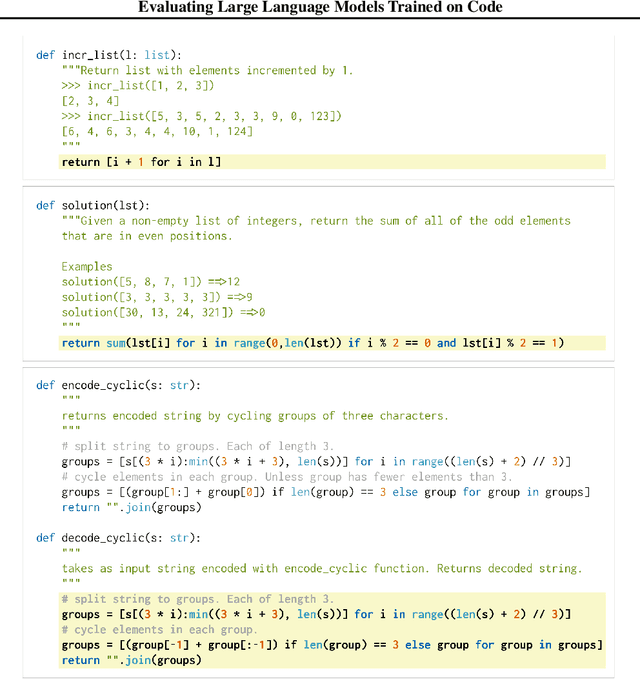

Abstract:We introduce Codex, a GPT language model fine-tuned on publicly available code from GitHub, and study its Python code-writing capabilities. A distinct production version of Codex powers GitHub Copilot. On HumanEval, a new evaluation set we release to measure functional correctness for synthesizing programs from docstrings, our model solves 28.8% of the problems, while GPT-3 solves 0% and GPT-J solves 11.4%. Furthermore, we find that repeated sampling from the model is a surprisingly effective strategy for producing working solutions to difficult prompts. Using this method, we solve 70.2% of our problems with 100 samples per problem. Careful investigation of our model reveals its limitations, including difficulty with docstrings describing long chains of operations and with binding operations to variables. Finally, we discuss the potential broader impacts of deploying powerful code generation technologies, covering safety, security, and economics.
 Add to Chrome
Add to Chrome Add to Firefox
Add to Firefox Add to Edge
Add to Edge